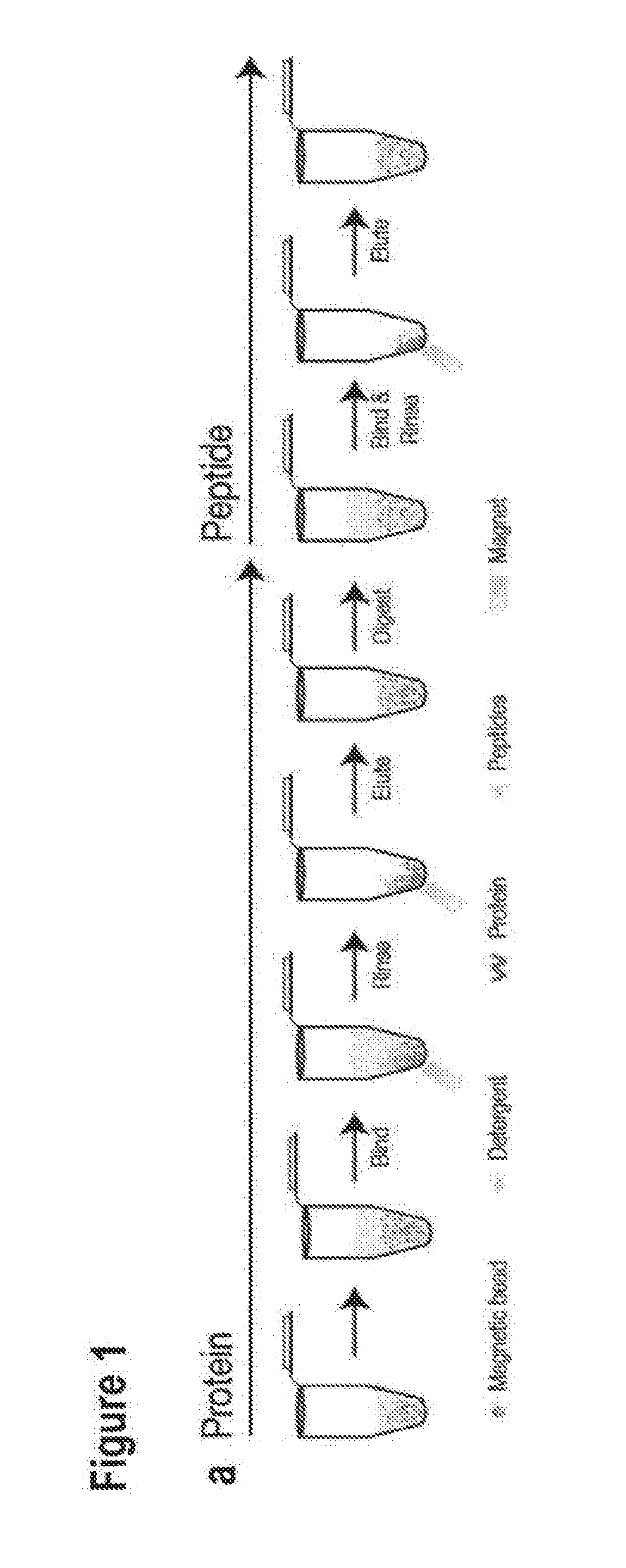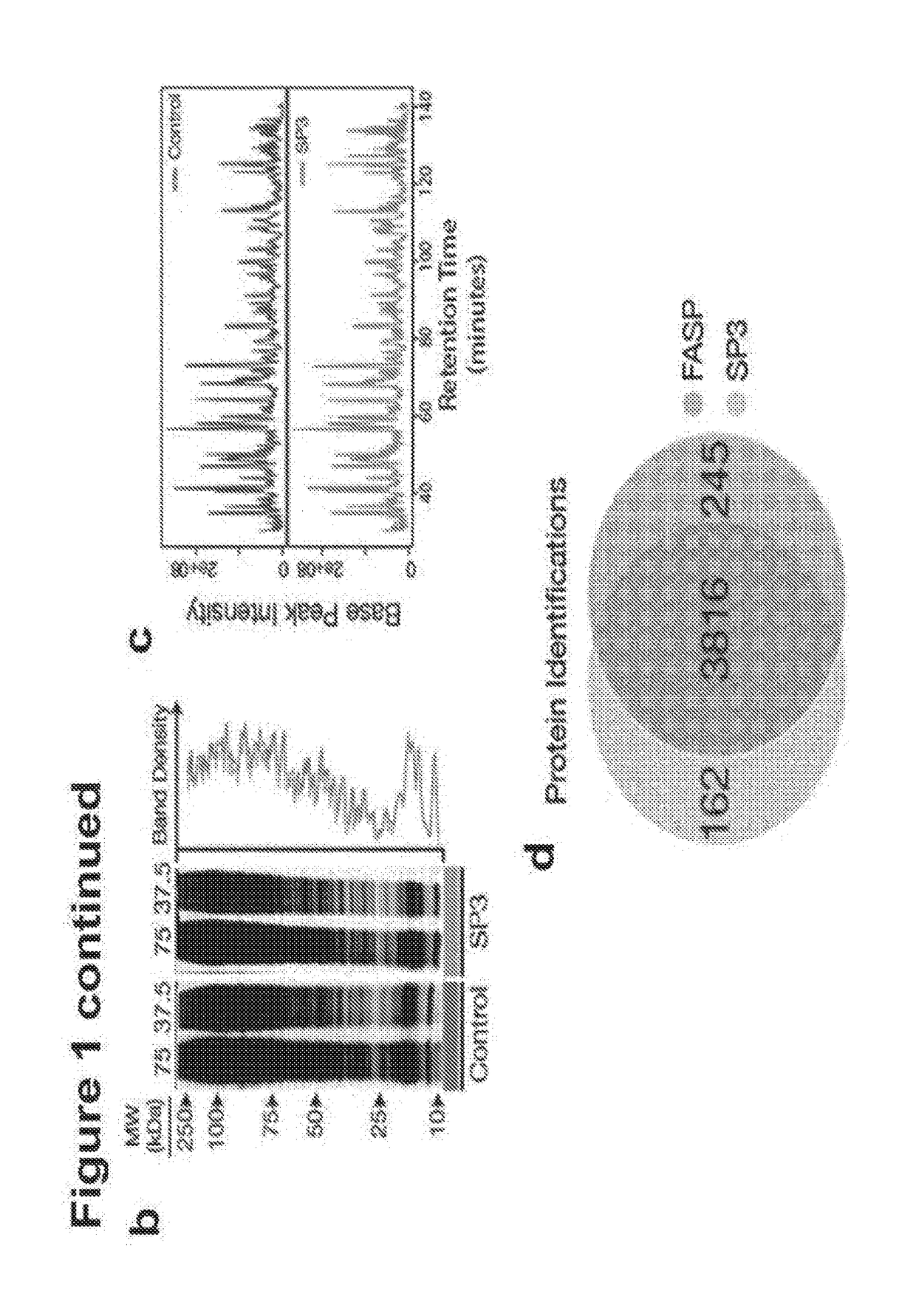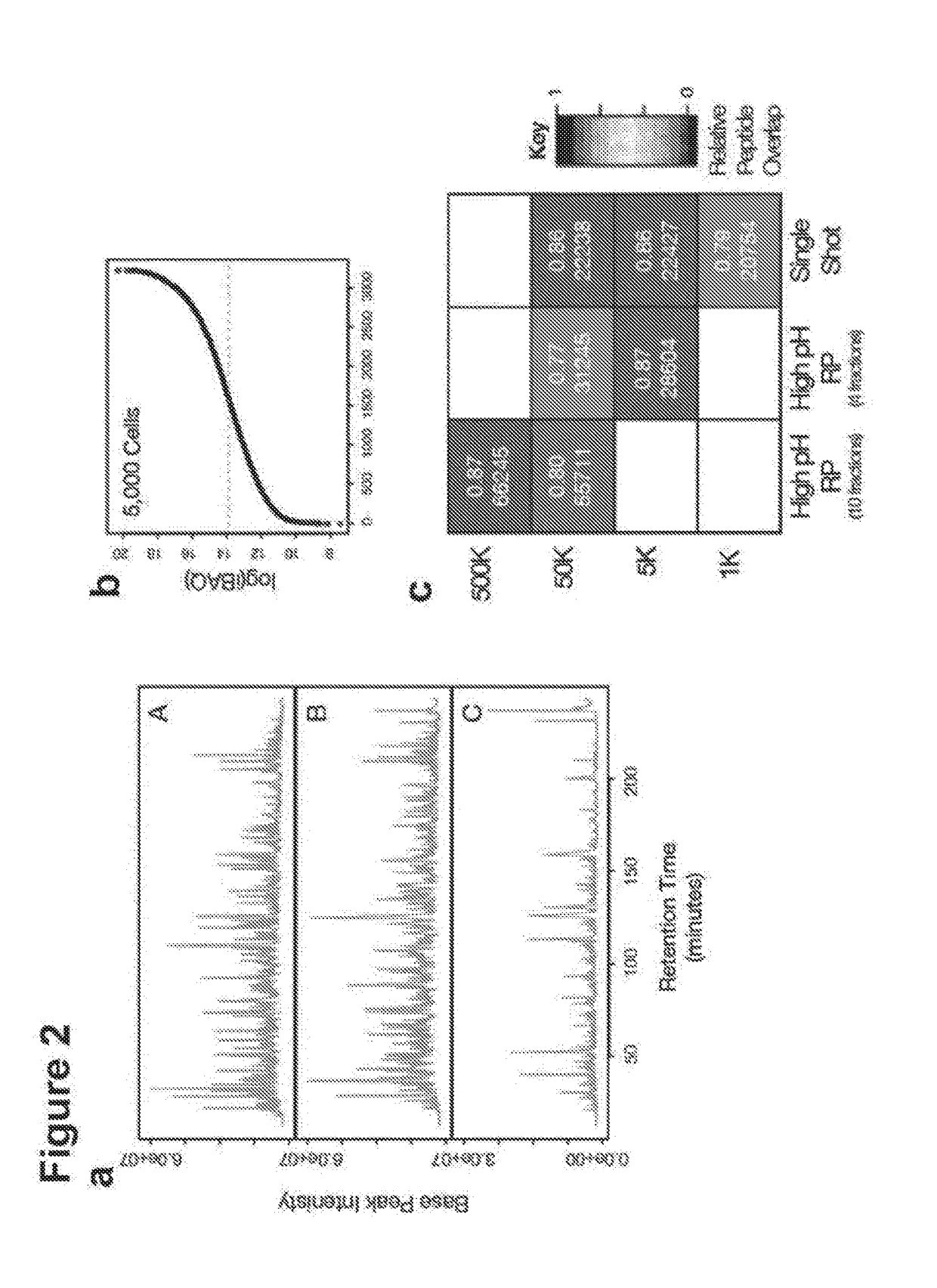Proteomic sample preparation using paramagnetic beads
a paramagnetic and sample technology, applied in the field of paramagnetic beads for protein sample preparation, can solve the problems of sample loss, reduced flexibility, and large amount of sample handling
- Summary
- Abstract
- Description
- Claims
- Application Information
AI Technical Summary
Benefits of technology
Problems solved by technology
Method used
Image
Examples
embodiments
[0053]In the following passages different aspects of the invention are defined in more detail. Each aspect so defined may be combined with any other aspect or aspects unless clearly indicated to the contrary. In particular, any feature indicated as being preferred or advantageous may be combined with any other feature or features indicated as being preferred or advantageous. In the work leading to the present invention, it was surprisingly shown that polypeptides can aggregate onto a solid phase comprising a hydrophilic surface.
[0054]Based on these results the present invention provides in a first aspect a method of reversibly binding polypeptides to a solid phase comprising a hydrophilic surface, further comprising the step of contacting the solid phase, a solution containing the polypeptides and a dehydration solution and / or a precipitation solution.
[0055]In a preferred embodiment of the first aspect, the hydrophilic surface of the solid phase comprises or consists of a polymer th...
example 1
Bead Preparation
[0132]In all experiments with SP3 we utilize commercially available beads that carry a carboxylate moiety. We have tested and verified the protocols used in this study with beads from Beckman Coulter (Ampure XP, CAT #A3880), CleanNA (Clean PCR, CAT #CPCR1300), and Thermo Fisher (Sera-Mag Speed Beads, CAT #09-981-121, 09-981-123). (Supplementary FIG. 9). In all cases, beads are an average diameter of 1 um and are coaled with a hydrophilic surface. For all SP3 experiments in this manuscript a 1:1 combination mix of the two types of Sera-Mag speed beads is used. Beads are rinsed with water prior to use and stored at 4° C. Magnetic racks used in all experiments were prepared in-house
example 2
Cell Culture
[0133]The yeast strain YAL6B (MATa, his3Δ leu2Δ met15Δ lys1::KanMX6 arg4::KanMX4)1 was cultured in rich medium (YPD) for all experiments. Replicate cultures were harvested at an optical density (OD600) of ˜0.8. Cells were harvested through centrifugation, rinsed with ice-cold PBS and snap frozen until use. HeLa Kyoto cells were cultured in DMEM with Glutamax supplemented with 10% fetal bovine serum and 1× non-essential amino acids. Cells were cultured at 37° C. in a 5% CO2 environment. Cells were harvested through incubation with a solution of 0.05% trypsin-EDTA, and centrifuged. Recovered cells were rinsed and counted prior to aliquoting to the desired cell number per tube. Approximate cell counts were acquired using a haemocytomer. Cell pellets were always directly lysed with no snap freezing. All cell culture reagents were obtained from Life Technologies unless noted otherwise.
PUM
| Property | Measurement | Unit |
|---|---|---|
| Fraction | aaaaa | aaaaa |
| Hydrophilicity | aaaaa | aaaaa |
| Interaction | aaaaa | aaaaa |
Abstract
Description
Claims
Application Information
 Login to View More
Login to View More - R&D
- Intellectual Property
- Life Sciences
- Materials
- Tech Scout
- Unparalleled Data Quality
- Higher Quality Content
- 60% Fewer Hallucinations
Browse by: Latest US Patents, China's latest patents, Technical Efficacy Thesaurus, Application Domain, Technology Topic, Popular Technical Reports.
© 2025 PatSnap. All rights reserved.Legal|Privacy policy|Modern Slavery Act Transparency Statement|Sitemap|About US| Contact US: help@patsnap.com



